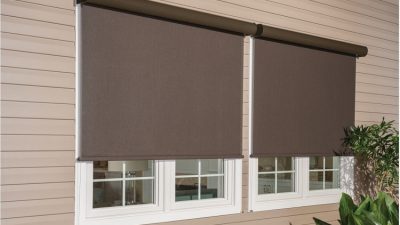Choosing the right railing system is crucial when it comes to enhancing the safety and aesthetics of your deck or staircase. In recent years, cable railing for stairs and decks has become a modern and stylish alternative to traditional railing systems.
In this article, we will compare cable and traditional railings, exploring their features, benefits, and considerations to help you decide which is the right choice for your deck or staircase.
Table of Contents
Cable Railing for Stairs: Sleek and Modern
Cable railing for stairs is a contemporary design choice that has gained significant attention for its sleek and minimalist appearance. Instead of traditional vertical balusters or spindles, cable railings use tensioned horizontal cables between posts, creating an open and unobstructed view.
This design is especially popular for decks with beautiful landscapes or scenic views, allowing you to enjoy the surroundings without visual obstructions.
Traditional Railings: Timeless and Classic
On the other hand, traditional railings have been a staple of architecture and design for centuries. They are known for their timeless and classic appearance, often featuring vertical balusters, ornate designs, and various wood, metal, or wrought iron materials.
Traditional railings offer a sense of familiarity and can complement a wide range of architectural styles, making them a versatile choice for many homes.
Comparison of Key Features
Now, let’s compare some key features of cable railings and traditional railings to help you make an informed decision:
- Aesthetics: Cable railings are known for their contemporary and open appearance, making them ideal for modern and minimalist designs. Traditional railings, on the other hand, offer a classic and timeless look that suits various architectural styles.
- View: Cable railings provide an unobstructed view, perfect for showcasing beautiful landscapes or vistas. Traditional railings can somewhat obstruct views, depending on the design and materials used.
- Maintenance: Cable railings are generally low-maintenance, requiring occasional cleaning and cable tension adjustments. Depending on the chosen materials, traditional railings may require more upkeep, such as painting, staining, or sealing.
- Safety: Both cable and traditional railings can provide adequate safety when installed correctly. Cable railings may require closer attention to cable tension to ensure they meet safety standards.
- Cost: Cable railings are more expensive upfront due to the complexity of materials and installation. Traditional railings can vary widely in cost, depending on the materials chosen, with some options being more budget-friendly.
- Installation: Cable railing installation can be more complex, requiring precise measurements and tensioning of cables. Traditional railings can be easier to install, especially if you opt for pre-fabricated railing systems.
Considerations for Cable Railing
If you’re leaning towards cable railing for your deck or staircase, here are some additional considerations:
- Local Building Codes: Check with your local building codes and regulations to ensure that cable railing meets safety requirements in your area.
- Material Options: Cable railings are available in various materials, including stainless steel, aluminum, and wood. Choose a material that suits your style and climate conditions.
- Cable Spacing: The spacing between cables is crucial for safety and aesthetics. Make sure to follow manufacturer guidelines for cable spacing and tension.
Considerations for Traditional Railing
If traditional railing appeals to you, here are some factors to keep in mind:
- Material Selection: Traditional railings can be crafted from wood, metal, or other materials. Consider the durability, maintenance requirements, and aesthetics of your chosen material.
- Design Flexibility: Traditional railings offer a wide range of design options, allowing you to customize the look to match your home’s style.
- Maintenance: Traditional railings may require regular maintenance, such as painting or staining, to protect them from the elements and maintain their appearance.
Conclusion
In conclusion, the choice between cable railings and traditional railings for your deck or staircase ultimately depends on your personal preferences, budget, and home style. Cable railings offer a modern and open look with unobstructed views, while traditional railings provide timeless elegance and design flexibility.
Consider your specific needs and the overall aesthetic of your space when making this important decision to ensure that your railing choice complements your home and enhances its beauty and functionality.







Comments